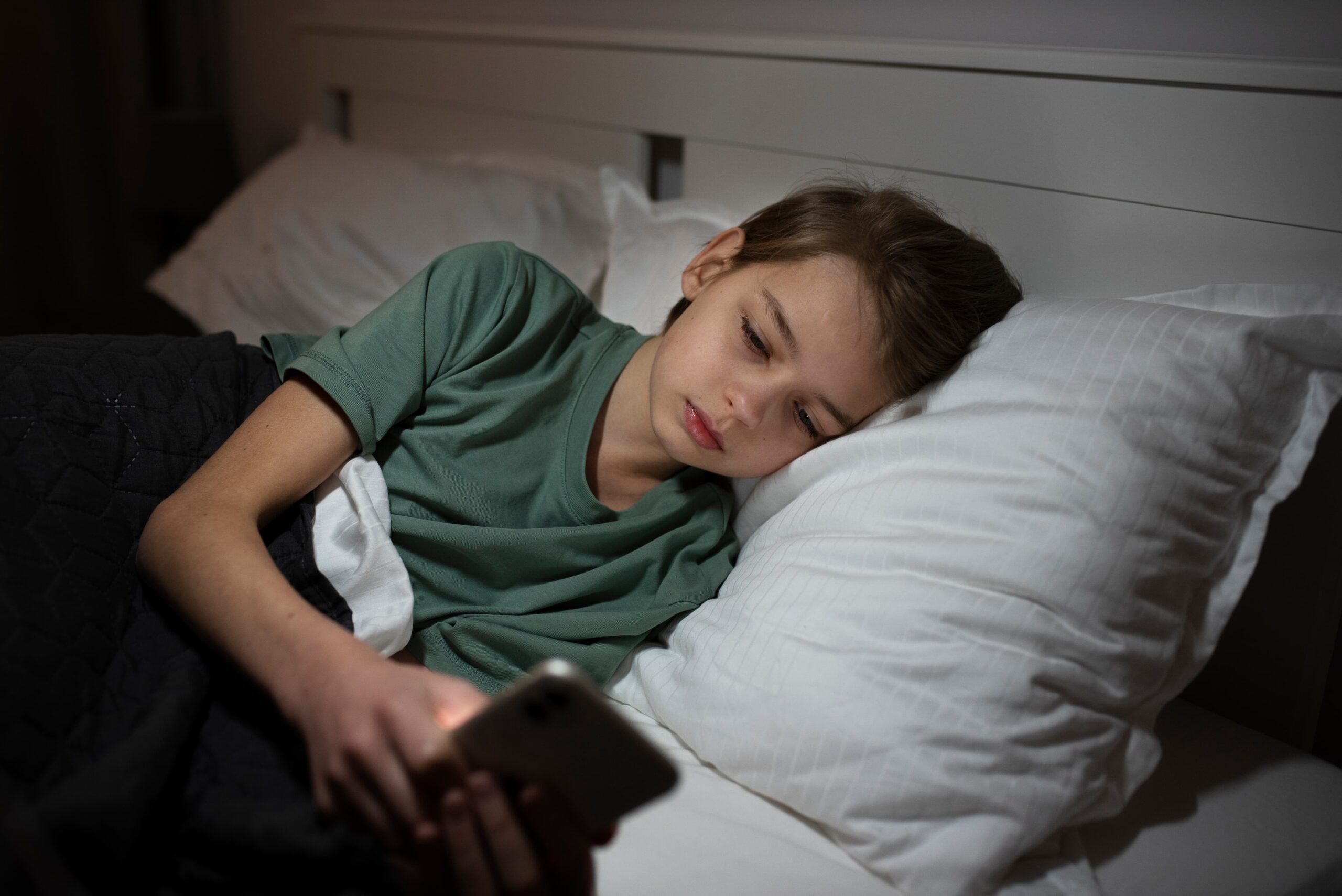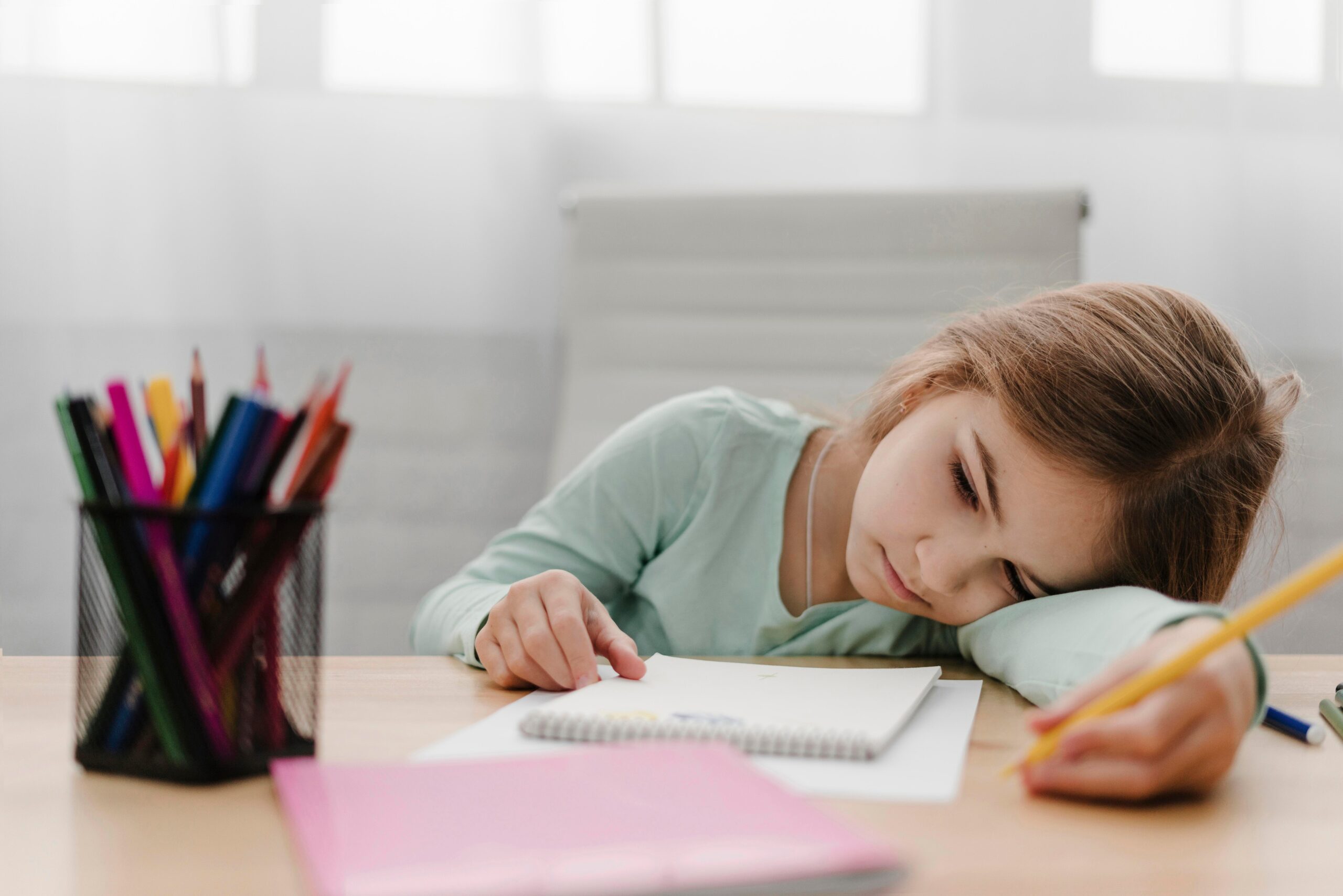Key Points:
- Children with autism commonly experience sleep problems like difficulty falling or staying asleep.
- ABA strategies and consistent bedtime routines can improve sleep outcomes.
- Understanding and addressing sensory sensitivities and behavioral patterns is key to better sleep.
Autism and sleeping problems co-occur for many people. And for most families of children on the autism spectrum, bedtime is anything but restful. Instead of being a calming end to the day, nighttime may bring stress, meltdowns, or hours of wakefulness. If your autistic child is not sleeping well, or not sleeping at all, you’re not alone.
Research estimates that 50% – 80% of autistic kids experience sleep difficulties, from trouble falling asleep to frequent night wakings and shorter total sleep time. These disruptions impact not just the child’s health and behavior but the entire family’s quality of life.
While sleep struggles in autism can feel overwhelming, there is help. Applied Behavior Analysis (ABA) therapy, combined with a consistent and tailored routine, can play a significant role in promoting better rest for your child.
Autism and Sleeping: Understanding the Unique Challenges
Sleep challenges in autism are complex and often connected to how the autistic brain processes the world. Common autism sleep problems include:
- Difficulty falling asleep
- Waking up multiple times throughout the night
- Waking too early
- Resistance to bedtime or routine
- Reduced total sleep time
Some causes of these issues include:
- Sensory sensitivities (e.g., noise, light, fabric textures)
- Irregular melatonin production (affecting sleep-wake cycles)
- Communication delays (making it harder to express sleep needs)
- High anxiety or difficulty transitioning between activities
Because of these unique factors, a typical bedtime strategy might not work well. Instead, solutions need to be personalized and grounded in behavioral science.

The Role of ABA Therapy in Supporting Sleep
ABA therapy helps children with autism build skills and reduce behaviors that interfere with learning, socializing, and yes, even sleeping. In the context of sleep training for autism, ABA can target specific sleep-interrupting behaviors with data-driven strategies.
Here’s how ABA can support better sleep:
- Behavioral Assessment – An ABA therapist will first observe and analyze the child’s current sleep routine and nighttime behaviors. Are they avoiding bedtime? Waking to engage with a caregiver? Engaging in self-stimulatory behavior before sleep? Pinpointing the issue is key.
- Reinforcement Strategies – ABA uses positive reinforcement to encourage desired behaviors. For example, staying in bed all night might earn a preferred reward the next morning. Reinforcement makes sleep routines more motivating for autistic kids.
- Gradual Sleep Shaping – ABA therapists might implement strategies such as bedtime fading, where bedtime is gradually moved earlier over time, or scheduled awakenings to preempt night wakings and adjust the body’s internal clock.
- Consistency and Generalization – Sleep improvements require consistency across caregivers, environments, and routines. ABA supports generalization, helping the child carry sleep-related behaviors from therapy into real-life bedtime routines.
Creating an Autism-Friendly Bedtime Routine
A consistent autism bedtime routine is essential. It helps signal to your child that bedtime is approaching and provides predictability, which many autistic children find calming.
Here’s how to build a successful bedtime routine for an autistic child:
- Start with a visual schedule – Use pictures or icons to show each step: bath time, pajamas, brushing teeth, bedtime story, lights out. This helps reduce anxiety around transitions.
- Keep it short and predictable – Limit the routine to about 20–30 minutes and do it the same way each night. Avoid surprises or last-minute changes.
- Use calming activities – Include sensory-soothing tasks such as a warm bath, soft music, or deep-pressure input (if your child enjoys it).
- Minimize screen time before bed – Blue light from screens can interfere with melatonin production. Try to stop screen use at least an hour before bed.
- Stay consistent even on weekends – Maintaining a regular autism sleep schedule helps regulate your child’s internal body clock. Sleeping in on weekends can disrupt weekday patterns.
Addressing Common Sleep Disruptions
Even with a solid routine, challenges may still pop up. Here are some specific ways to help an autistic child sleep better and manage disruptions:
- If your child resists bedtime: Use a first-then strategy. “First brush teeth, then story time.” Offer a small motivator (e.g., stickers, favorite toy) for completing the routine.
- If your child wakes in the night: Keep interactions brief and boring. Avoid engaging or stimulating activities. Return them to bed with minimal fuss.
- If your child naps too long or too late: Adjust nap times so they don’t interfere with nighttime sleep. Autism and naps can be a tricky balance; some children still need one, but naps should be early and limited to 30–60 minutes.
- If your child has sensory issues: Try blackout curtains, white noise machines, or weighted blankets. Clothing tags, bedding textures, and even room temperature can affect sleep quality.
- If anxiety is part of the problem: A calming bedtime story, mindfulness app, or a favorite stuffed animal might help. ABA strategies can also teach coping skills over time.
When to Consider Sleep Training for Autism
If your child’s sleep problems persist despite consistent routines, sleep training in autism can be a helpful next step. ABA therapists may use structured approaches like:
- Extinction (with modifications) – Gradually reducing attention to night wakings
- Bedtime fading – Adjusting sleep timing to align with the child’s natural sleepiness
- Scheduled awakenings – Preemptively waking the child before typical waking times, then slowly removing the scheduled wake-ups
These techniques require expert guidance and may need to be adapted to your child’s age, developmental level, and medical needs.
Sleep training doesn’t mean forcing your child to sleep; it means creating the best conditions, routines, and supports to help them sleep on their own.

A Note on Medications and Melatonin
Some families consider melatonin supplements or other medications for sleep. While these can help some children with autism and sleeping issues, they should never replace behavioral strategies or ABA-based supports. Always consult with a pediatrician or sleep specialist before starting any supplement.
Wraparound Support: Why Sleep Matters for the Whole Family
Better sleep is not just a goal but a foundational piece of your child’s well-being. Chronic sleep issues can lead to behavioral challenges, difficulty focusing, and increased caregiver stress. For many families, addressing sleep is the first big step toward better quality of life.
ABA therapy supports not only the child but also the entire household by creating sustainable, measurable changes in daily routines, including sleep patterns. With the right guidance and consistent strategies, better nights can become a reality.
Reclaim Rest: Get Support with ABA Therapy in New York and Virginia
If you’re feeling exhausted from constant night wakings or struggling with creating a bedtime routine for your autistic child, you’re not alone, and you don’t have to figure it out all by yourself.
Empower ABA provides ABA therapy services in New York and Virginia, offering personalized behavior plans that address sleep challenges, routine-building, and more.
Our team at Empower ABA works closely with families to understand each child’s unique needs and design practical strategies that make a difference, night after night.
Take the next step toward better sleep for your child and peace of mind for your family. Contact us today to learn how we can support your family’s journey toward restful nights.

